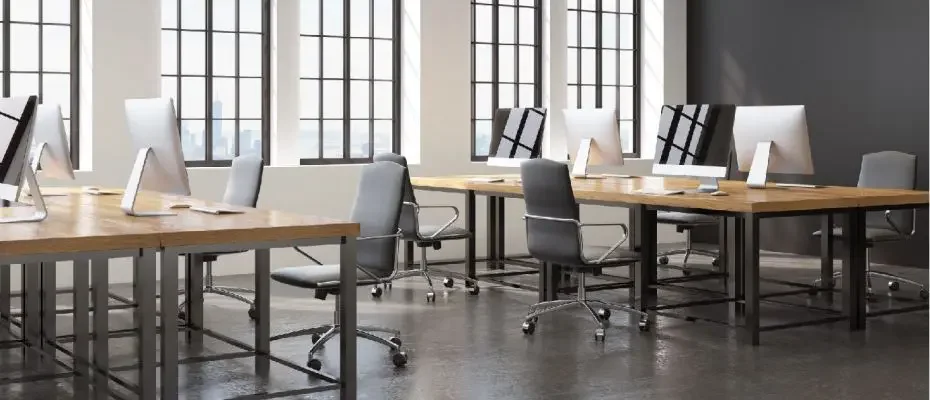If there’s one thing Covid-19 has changed, it’s the way in which we work. The pandemic has made businesses rethink their office space, with many considering ditching high-priced fixed leases and switching to renting flexible office spaces so that employees can return to work safely.
Rob Gould, Partner at Barker, believes occupiers should use this opportunity to rethink their office space design. He shares his tips on how to create a safe and flexible working space for employees to return back to.
1. Rethink the design space
Although offices have changed over the past decade, they may need to be entirely reimagined for a post-Covid world.
Many businesses are using this time to create new office fit outs; not only to adhere to the latest government guidelines but to also customise new and existing office space to help employees return to work safely and grow their productivity.
Now is the perfect time to rethink how your existing space will work by taking the following into consideration;
Safety and health – Does the space take social distancing measures into account? Will employees feel safe and comfortable working in the office? Does it allow employees to engage safely?
Agility and flexibility – Does the space allow for flexible and agile working? Where is the space located? How many employees need to be in the space at one time? Can the space be adapted as time goes on?
Productivity – Will the space increase productivity? What tools can you put in place to support collaborative working?
2. Put your employees’ well-being first
Whether you need to re-arrange your workspace, introduce new areas within your office or undergo a complete office fit-out, employees need to feel safe and comfortable in the workspace.
According to Flexioffice, 24% of those in ‘people’ roles say that one thing they want to change is access to more breakout spaces and communal areas. Building dedicated breakout spaces into your design will provide employees with a space to recharge and provide safe meeting spaces for colleagues.
If you’re a larger organisation where change could prove difficult, consider reconfiguring desks away from a standard linear approach, or add easily moveable furniture to give employees more control to distance themselves from others.
Redesigning your space with employee wellbeing in mind is key. Try incorporating wellness elements such as natural lighting, biophilia and cycle racks.
Some companies are even adding coffee shops, gyms and other facilities into their office spaces to create attractive “destinations” for their employees to improve their wellbeing and to encourage a return to the office.
3. Change materials and surfaces
Where possible, switch to washable fabrics and hard cleanable surfaces in breakout areas, meeting rooms and kitchen facilities.
Don’t forget to bring the outside in. Partitions and glass screens won’t be effective enough to prevent the spread of germs; your office design should incorporate ventilation systems and biophilia throughout.
Copper fixtures also retain fewer germs and can be easily cleaned – plus they are aesthetically appealing so your office space will be more inviting to employees and guests.
4. Focus on technology
Regardless of whether you’re thinking about a complete redesign or upgrading existing elements to the workspace, your space should be designed with technology in mind.
Think remote control access, facial recognition, touchless switches or voice commands on lights and doors – all of which will minimise contact and help to make employees feel safe.
5. Resize your office footprint
Changing work patterns have meant employees may continue to balance working from home and in the office for some time, so resizing the existing footprint may be a cost-effective option and provide more space for a safer environment.
Many companies are choosing to take this approach to allow for a flexible working space that not only meets the current needs but one that can be adapted as time goes on.
As traditional office spaces are behind us, flexible and agile design spaces will need to be created to easily expand or contract to accommodate greater or less distancing in the future.
Employees will want to come back to the office for human interaction, collaboration, wellbeing and productivity, but the responsibility is on workplace operators to create an environment in which this can happen safely.
For more information on Barker’s fit-out services, contact the team on 01279 647111 or email us at mail@barker-associates.co.uk
